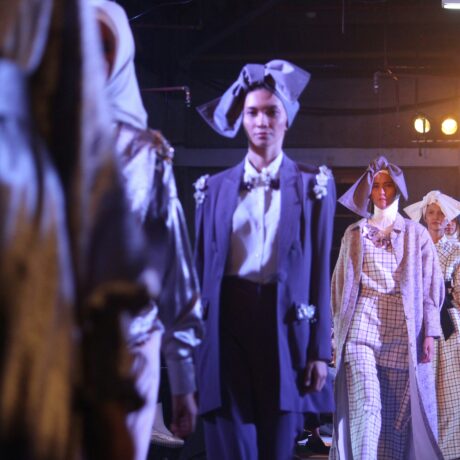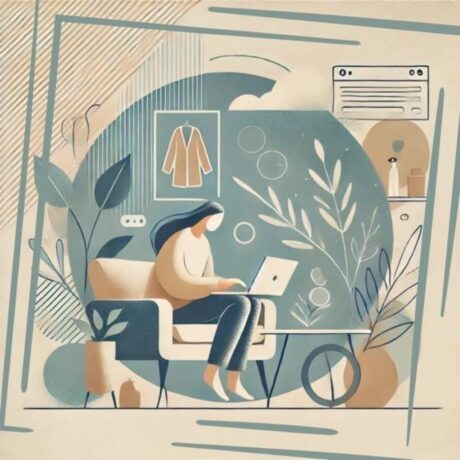Ending Forced Labor: An Opportunity to Advocate
This is a guest article as part of Fashion Revolution USA‘s partnership with The Fashion Connection to bring awareness to the state of human trafficking within the fashion industry.
Learning about the issue of human trafficking can be daunting, but there are many resources to grow your awareness and take corresponding action. As a representative from The Fashion Connection, a nonprofit focused on creating connections in the ethical and sustainable fashion space, I’m excited to share an immediate opportunity to advocate for change in how this issue is connected with the fashion industry. To start, let’s dive into some legal background, and then I’ll share more on what you can do.
“Forced labor” and “human trafficking” defined
The Tariff Act of 1930 gave US federal law enforcement the authority to prohibit the importation of goods produced overseas by the use of forced labor. As defined in the Tariff Act, “forced labor” includes “all work or service which is exacted from any person under the menace of penalty for its nonperformance and for which the worker does not offer himself voluntarily.” The Tariff Act remains unique in the world to this day, as it can result in both civil and criminal penalties for those who do not follow it.
In 2000, the U.S. government passed the Trafficking Victims Protection Act (TVPA), which included a variety of new laws and definitions to better combat various forms of exploitation, all of which the TVPA labelled under the term “human trafficking.” According to the TVPA, human trafficking is a crime that involves exploiting a person for labor, services, or commercial sex through force, fraud, or coercion.
Cotton made with forced labor
More than one fifth of the world’s cotton comes from the Uyghur/Xinjiang region of China. Forced labor is part of the reeducation campaign and ethnic cleansing undertaken by the Chinese government there, and the US government considers the treatment of the Uyghur community to be genocide and a crime against humanity. A number of brands and nonprofits, including Fashion Revolution, have stated publicly that they do not support using cotton from this region due to the human rights violations, including forced labor, taking place there.
To learn more about this connection and the state of human trafficking as it relates to fashion, Fashion Revolution USA hosted an IG Live with Rachel Raba from the U.S. Department of Labor, Andrea Powell from Karana Rising, and myself on July 29, 2021. This conversation centered on explaining the basics of these interconnected issues, including important terms and how to use them, and we also had the opportunity to discuss the role of trafficking in the fashion industry.⠀
How the US Tariff Act is combating labor trafficking today
The US Tariff Act from nearly a century ago is now doing important work, thanks to the Trade Facilitation and Enforcement Act of 2015 (signed by President Obama in 2016). Prior to the 2015 Act, goods made with forced labor could still be brought into the US if they were not produced “in such quantities in the United States as to meet the consumptive demands of the United States”, however the 2015 Act removed this problematic provision. This enhanced the ability for goods made with forced labor to be blocked from entering the United States.
How does this work? Any person who believes that merchandise produced with forced labor may be imported into the US may submit violations to US Customs and Border Protection (CBP). If CBP believes there is sufficient evidence they will issue a Withhold Release Order (WRO) prohibiting goods of a certain type from entering the United States. US Immigration and Customs Enforcement (ICE) can also pursue criminal charges against violators, including both the company seeking to sell the goods in the US as well as any companies involved with importation logistics.
On January 13, 2021, CBP issued a WRO covering all cotton from the Xinjiang Uyghur Autonomous Region. An important first step in combating forced labor in the region, this order identified forced labor indicators there including debt bondage, restriction of movement, intimidation and threats, withholding of wages and abusive living and working conditions in the region.
There is still much work to be done by the US government. For example, as listed in the Department of State’s most recent Trafficking in Persons (TIP) report, NGOs have asked for increased enforcement of prohibitions around the importation of goods produced with forced labor and requested more transparency in related governmental processes so NGOs and unions can better monitor workers’ conditions.
There are also opportunities to act against forced labor outside of the WRO process, including one right now!
How you can act NOW to fight against forced labor
The Uyghur Forced Labor Prevention Act is a 2021 bipartisan bill that unanimously passed in the US Senate on July 14, and the corresponding House Resolution 1155 is pending. Consider contacting your representatives to show your support for immediate action on this legislation that would ban all goods from this region under the assumption that they are made with forced labor, unless proven otherwise.
To learn more on how to take action, as well as for more information on human trafficking and tools for advocacy, check out resources on the TFC Platform. There you can also find an exciting new resource created by TFC with the support of our country’s anti-human trafficking leaders entitled “Ethical Fashion and Anti-Human Trafficking: A Guide for Communication and Engagement.”
Rebecca Ballard is the Founder and Executive Director of The Fashion Connection, a new nonprofit creating connections across the US ethical and sustainable fashion industry and adjacent fields, as well as the Founder and CEO of Maven Women, an ethical and sustainable clothing brand. She is also a lawyer who previously worked for the US federal government.







